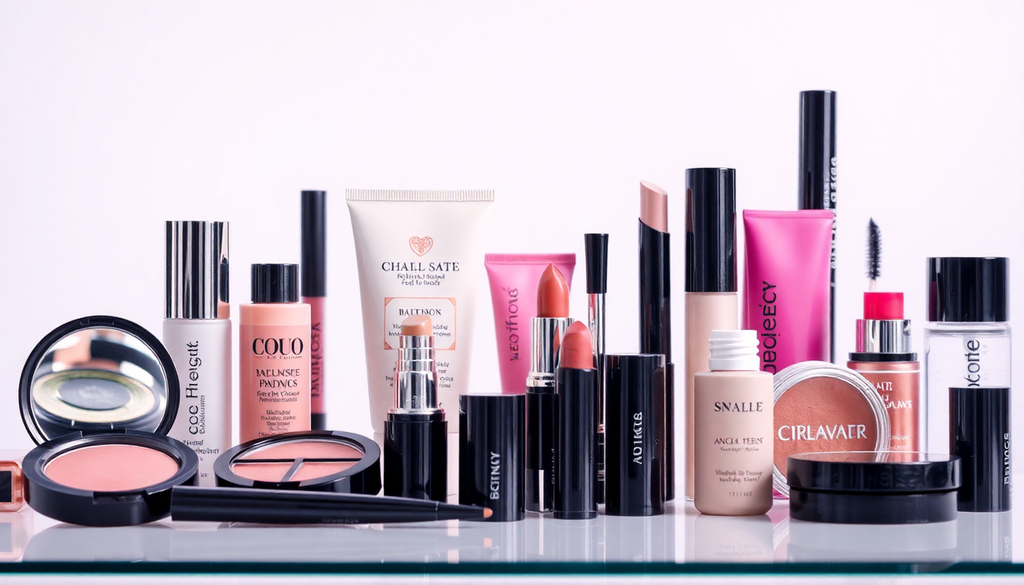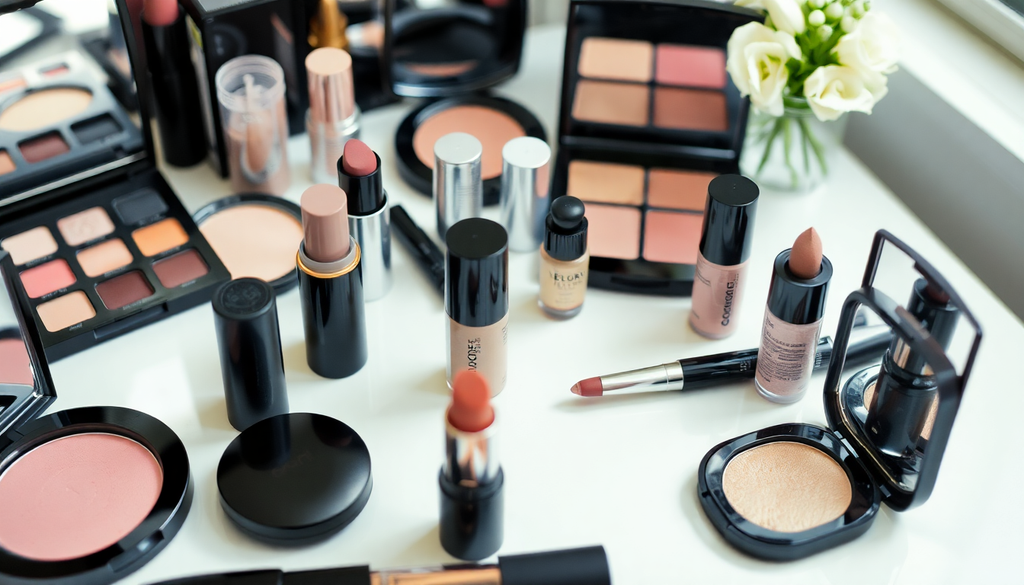
Navigating International Makeup Markets in 2025: A Country-by-Country Guide to Certification, Import Policies, and Trendy Product Launch Strategies
Introduction
The makeup industry is witnessing unprecedented growth, driven by evolving consumer preferences, technological advancements, and a surge in e-commerce. As we navigate through 2025, understanding the intricacies of international markets is paramount for makeup entrepreneurs. This comprehensive guide will provide insights into certification processes, import policies, and effective product launch strategies tailored to various countries, ensuring your brand can thrive globally.
1. United States
The U.S. market is one of the largest for cosmetics, but it comes with its own set of regulations and consumer expectations. Here are the essential elements to consider:
- Certification: The U.S. Food and Drug Administration (FDA) oversees the safety of cosmetics. Unlike pharmaceuticals, cosmetics do not require pre-market approval, but brands must ensure their products are safe for use and properly labeled. Key aspects include:
- Ingredient Safety: Brands must ensure that ingredients are safe and compliant with FDA regulations.
- Labeling: Clear labeling is crucial, including ingredient lists, net weight, and any claims made on the packaging.
- Import Policies: Importing cosmetics into the U.S. requires adherence to specific regulations. Consider the following:
- Customs Regulations: Ensure all products comply with U.S. customs regulations to avoid delays.
- Tariffs: Be aware of any tariffs that may apply to cosmetic products.
- Trendy Launch Strategies: To effectively launch products in the U.S. market, consider:
- Influencer Marketing: Collaborate with beauty influencers on platforms like Instagram and TikTok to reach a larger audience.
- Social Media Engagement: Create engaging content that resonates with target demographics, showcasing product benefits and usage.
- Seasonal Promotions: Take advantage of holidays and events to launch limited edition products.
2. European Union
The EU is known for its rigorous standards when it comes to cosmetics, making it vital for brands to understand compliance requirements. Key points include:
- Certification: The EU Cosmetics Regulation (EC) No. 1223/2009 mandates that all cosmetic products must be assessed for safety before they can be sold. Important elements include:
- Safety Assessments: Brands must conduct thorough safety assessments by qualified professionals.
- Product Information File (PIF): A PIF must be maintained for each product, detailing the product’s safety, efficacy, and labeling.
- Import Policies: Compliance with EU regulations is mandatory for importing cosmetics. Consider the following:
- REACH Compliance: Ensure that all chemical substances used in your products comply with the Registration, Evaluation, Authorisation and Restriction of Chemicals (REACH) regulation.
- CLP Regulation: Labeling must be in accordance with the Classification, Labelling and Packaging (CLP) regulation.
- Trendy Launch Strategies: To succeed in the competitive EU market, brands should:
- Focus on Sustainability: Eco-friendly products and packaging are increasingly in demand; consider adopting sustainable practices.
- Utilize Local Influencers: Partner with local beauty influencers to build brand credibility and reach.
- Participate in Trade Shows: Attend major beauty expos to showcase products and connect with retailers.
3. Japan
The Japanese cosmetics market is characterized by high-quality standards and unique consumer preferences. For brands looking to enter this market:
- Certification: The Ministry of Health, Labour and Welfare (MHLW) regulates cosmetics in Japan. Important considerations include:
- Product Registration: Register all products with the MHLW, providing detailed information about ingredients and safety.
- Labeling Requirements: Labels must be in Japanese and include ingredient lists, usage instructions, and any necessary warnings.
- Import Policies: Navigating Japan’s import regulations is critical. Here are the key points:
- Customs Clearance: Ensure all paperwork is complete for smooth customs clearance.
- Ingredient Restrictions: Familiarize yourself with Japan's list of prohibited and restricted ingredients.
- Trendy Launch Strategies: To capture the attention of Japanese consumers, consider:
- Localized Marketing: Adapt marketing campaigns to resonate with local culture and aesthetics.
- Innovative Formulations: Focus on unique textures and formulations, such as cushion compacts and gel-based products.
- Online Sales Channels: Leverage e-commerce platforms that are popular in Japan, such as Rakuten and ZOZOTOWN.
4. South Korea
South Korea is a powerhouse in the beauty industry, known for its innovative products and trends. Here’s how to effectively enter this market:
- Certification: The Korea Food and Drug Administration (KFDA) oversees cosmetics. Key points include:
- Product Registration: All cosmetics must be registered with the KFDA before they can be sold.
- Ingredient Safety: Ensure compliance with KFDA regulations regarding safety and efficacy.
- Import Policies: Key considerations for importing cosmetics to South Korea include:
- Documentation: Prepare all necessary documentation to comply with KFDA requirements.
- Tariffs: Be aware of any applicable tariffs on imported cosmetics.
- Trendy Launch Strategies: To succeed in the K-beauty market, brands should:
- Leverage Social Media: Utilize platforms like Instagram and KakaoTalk to engage with consumers.
- Focus on Innovation: Introduce products with unique benefits, such as multi-functional items that cater to busy lifestyles.
- Collaborate with K-Beauty Influencers: Partner with popular K-beauty influencers to enhance brand visibility.
5. Brazil
Brazil is one of the fastest-growing markets for cosmetics, driven by a young and diverse population. For brands looking to enter the Brazilian market:
- Certification: The National Health Surveillance Agency (ANVISA) regulates cosmetics in Brazil. Important aspects include:
- Product Registration: All cosmetic products must be registered with ANVISA, providing safety and efficacy data.
- Labeling Requirements: Ensure compliance with Brazilian labeling laws, including ingredient lists in Portuguese.
- Import Policies: Be mindful of Brazil's import regulations:
- Customs Regulations: Understand the customs process and ensure all documentation is accurate to avoid delays.
- Tariffs: Be aware of the tariffs that may affect product pricing.
- Trendy Launch Strategies: To appeal to Brazilian consumers, consider:
- Emphasizing Natural Ingredients: Highlight the use of natural and locally sourced ingredients, which resonate with Brazilian consumers.
- Cultural Relevance: Tailor marketing campaigns to reflect Brazilian culture and beauty standards.
- Utilizing Social Media: Engage with consumers through popular platforms like Instagram and WhatsApp.
6. Australia
The Australian cosmetics market is rapidly evolving, with consumers increasingly seeking quality and ethical products. Here’s how to successfully navigate this market:
- Certification: The National Industrial Chemicals Notification and Assessment Scheme (NICNAS) regulates the safety of cosmetics. Key considerations include:
- Product Notification: All cosmetic products must be notified to NICNAS before being sold.
- Ingredient Compliance: Ensure that all ingredients used in products comply with Australian laws.
- Import Policies: Important import considerations include:
- Customs Duties: Understand applicable customs duties and tariffs for cosmetics.
- Labeling: Ensure that product labels meet Australian standards, including ingredient disclosure.
- Trendy Launch Strategies: To capture the Australian market, consider:
- Highlighting Ethical Practices: Promote cruelty-free and vegan certifications, as ethical consumerism is on the rise.
- Local Collaborations: Partner with Australian brands or influencers to enhance credibility and reach.
- Utilizing E-commerce: Capitalize on the growing trend of online shopping by enhancing your online presence.
Conclusion
Entering international makeup markets in 2025 offers exciting opportunities for brands willing to navigate the complexities of certification, compliance, and consumer preferences. By understanding the unique regulations and trends in each country, entrepreneurs can effectively launch and promote their products, ensuring a successful global presence. Staying informed about evolving trends and consumer demands will be key to thriving in the dynamic beauty industry.


